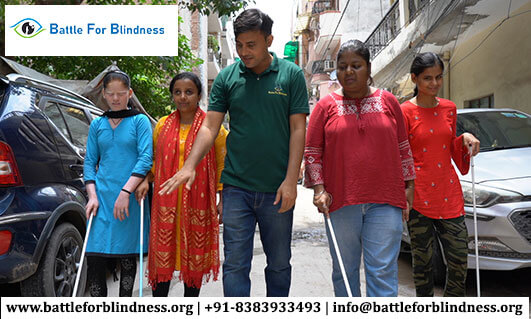
Education is a fundamental right for all, yet for visually impaired girls, it often remains an elusive dream. Despite global advancements in education, this marginalized group faces numerous barriers, from societal stigma to inadequate resources. Addressing these challenges is crucial not only for their empowerment but also for fostering inclusive growth. This blog explores the importance of equal education opportunities for visually impaired girls and highlights the steps needed to bridge the gap.
The Current Scenario
Globally, over 30 million people live with visual impairments, with a significant proportion being girls and women. UNESCO reports reveal that visually impaired girls are less likely to access education compared to their male counterparts or sighted peers. Factors contributing to this disparity include:
-
Socioeconomic Barriers: Poverty restricts access to specialized education tools such as Braille books or screen readers.
-
Cultural Stigma: Misconceptions about disabilities often discourage families from investing in the education of visually impaired girls.
-
Infrastructure Gaps: A lack of accessible schools, trained teachers, and inclusive curriculums further hinders their educational journey.
Why Education Matters
Education transforms lives, and for visually impaired girls, it serves as a gateway to independence, self-confidence, and societal contribution. Key benefits include:
-
Economic Empowerment: Educated girls have higher earning potential, contributing to their families and communities.
-
Social Inclusion: Education helps break stereotypes, fostering a more inclusive society.
-
Leadership Development: With the right education, visually impaired girls can become role models and advocates for change.
Bridging the Gap: Strategies for Equality
To ensure equal education rights for visually impaired girls, a multifaceted approach is required. Key strategies include:
1. Inclusive Policy Frameworks
Governments must implement policies that mandate inclusive education, ensuring equal opportunities for visually impaired students. Initiatives like India’s “Samagra Shiksha Abhiyan” emphasize inclusive education models.
2. Technological Innovations
Technology plays a pivotal role in bridging the educational divide. Tools such as screen readers, Braille e-books, and voice-assisted learning platforms enable visually impaired students to access quality education.
3. Community Awareness
Raising awareness about the capabilities and rights of visually impaired girls can help reduce stigma. Community-driven campaigns and workshops can encourage families to prioritize their education.
4. Teacher Training
Teachers trained in inclusive education methodologies are essential. They can adapt curriculums and teaching styles to meet the needs of visually impaired students effectively.
5. Financial Support
Providing scholarships and subsidized educational tools can alleviate the economic burden on families, making education accessible for visually impaired girls.
Success Stories: Leading by Example
Many visually impaired women have overcome challenges to achieve remarkable success. For instance, Haben Girma, the first deaf-blind graduate of Harvard Law School, is a testament to the transformative power of education. Her journey underscores the importance of inclusive systems and the potential of visually impaired girls when given equal opportunities.
Conclusion
Bridging the educational gap for visually impaired girls requires a collective effort from governments, communities, and individuals. By prioritizing inclusivity, leveraging technology, and challenging societal norms, we can ensure that every girl, regardless of her abilities, has access to quality education. Education is not just a right—it is a powerful tool for transformation and equality.





